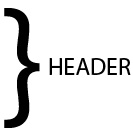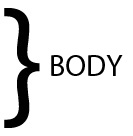How to write an Application Letter
How to Write Application Letter
Writing an application letter would and should be an easy task for those who know about business letters. Application letters like other formal letters follows various formats having varying degree of differences. A formal letter style like block, full block, semi-block or modified semi-block style. In certain settings you may be given guidelines on writing an application letter in a certain manner. Otherwise application letters can be written as advised. For a more practical guidance towards writing application letters please go through through application letter formats, tips and templates.
|
Application Letter Formats |
Tips for Writing Application Letters
- Outline – Before you begin to write make an outline of your application. Specify your agenda to yourself, what do you want or require. Do you need any supporting documents or is just a standalone application. Prepare a list of things that you may require and tick them when you have them. This will save you time and energy.
- Drafting – Drafting is a rough copy of the original one. The outline of the letter comes to be useful here. You have everything you need so begin the letter. Don’t worry about grammatical mistakes, punctuation, spelling, sentence structure or word limit. If you are not sure of one particular format, create multiple ones and see which the best is. You can also consult your seniors in this regard.
- Opening Salutations Rules - It is unprofessional to use only the First Name of the person unless you have an informal relationship with the addressee, e.g. ‘Dear Samantha’
- Salutation requires a Comma at its end - Dear Mr. Ronald Ross,
- If there are Multiple Recipients you have to use ‘Dear Sirs/Madams'
- If there are only Two Recipients of different Gender, you have to use ‘Dear Mr. Dhanoa and Ms. Dhanoa’
- If the Multiple Recipients are consist of both Gender, use ‘Dear Sir(s), Gentlemen and Madam(s)’, using the ‘S’ as per se
- If you don’t have the name of the recipient, simply write, ‘Dear Sir/Madam’
- If the last name or the title of the recipient is known, write the same, e.g. – ‘Dear Dr. Singh’ or ‘Dear Personnel Director’
- If you don't know the recipient's name or gender, use ‘To whom it may concern,’ ‘Ladies and Gentlemen’ or ‘Dear Sir or Madam’
- If the recipient's gender is unclear or not known from his/her name, simply type the whole name, e.g. 'Dear Max McCullan’
- Use Ms for women unless asked to use Mrs or Miss. ‘Miss’ is meant for an ‘Unmarried Woman’, ‘Mrs.’ is meant for a ‘Married Woman’ and ‘Ms.’ is meant for a woman whose marital status is not known to you
- Be Specific and Brief – Come to the point or agenda at hand as the receiver may not have much time in their hands. This will also initiate a quick response as the information will be brief and specific. Mention the purpose of the letter in the first paragraph itself. Avoid your comments in the first paragraph. Give information in a serial wise manner.
- Courtesy – Courtesy doesn’t mean writing the Salutations, it also means that you consider the recipient worthy of importance. Be reasonable, cordial and use a formal language to address the letter. Don’t use any slang or double meaning words.
- Typing and Printing – Use commonly used fonts such as Arial or Times New Roman as these are easy on eyes. Don’t use fancy fonts which the other person may not be able to read. Use the proper size of font to suit the need in lieu of paper size. For writing on envelope, you can use the printer. Place the envelope in your printer and give the print command on the address mentioned in your word processor.
- Typed not Handwritten - Make sure that you type the letter. Typed letters are spaced, aligned evenly and have a uniform structure. This makes them easy to read.
- Formal Closing Salutations - Closing business salutations should match the tone of the letter. A formal salutation is polite, courteous and respectful to the recipient.
Common formal salutations are:
- Sincerely or Yours Sincerely
- Respectfully Yours’
- Faithfully Yours
- Yours Truly
- Proofreading – Proofing a letter means to read the letter to see any errors. If you miss out any mistakes you can rectify them reading aloud to yourself. Spell check your letter, edit the errors, sometimes we miss out the mistakes as certain words like ‘Form’ and ‘From’ may sound valid to spell check. Depending upon the receiver you may need to spell check it as per the English form in various regions.
Application Letter Format (full block style)
|
Your Name Date
Reference or Subject (optional) Dear Recipient (Salutation) First Paragraph – Introduce yourself, write 2-4 lines pertaining to assistance, admission, employment, favour, information etc. Second Paragraph – Details of the topic at hand Third Paragraph – Intimation for any further communication and so on.
Subscription – Thanking you, yours sincerely etc. Signature |
Application Letter Format(semi block style)
|
Your Name Date Reference or Subject (optional) 1st Para* – Introduce yourself 2nd Para* – Details regarding assistance, employment etc.
Subscription – Thanking you, yours sincerely etc. Signature ENCL (optional) stands for ‘Enclosure’ which can be any related attached documents |
*Indented
Application Letter Format (modified block style)
|
Your Name
Reference or Subject (as required)
1st Paragraph (aligned left) – Introduce yourself, write 2-4 lines pertaining to assistance, admission, employment, favour, information etc. 2nd Paragraph (aligned left) – Details of the topic at hand 3rd Paragraph (aligned left) – Intimation for any further communication and so on
Subscription – Thanking you, yours sincerely etc. Signature attached documents (Closing should be positioned to the right) |



